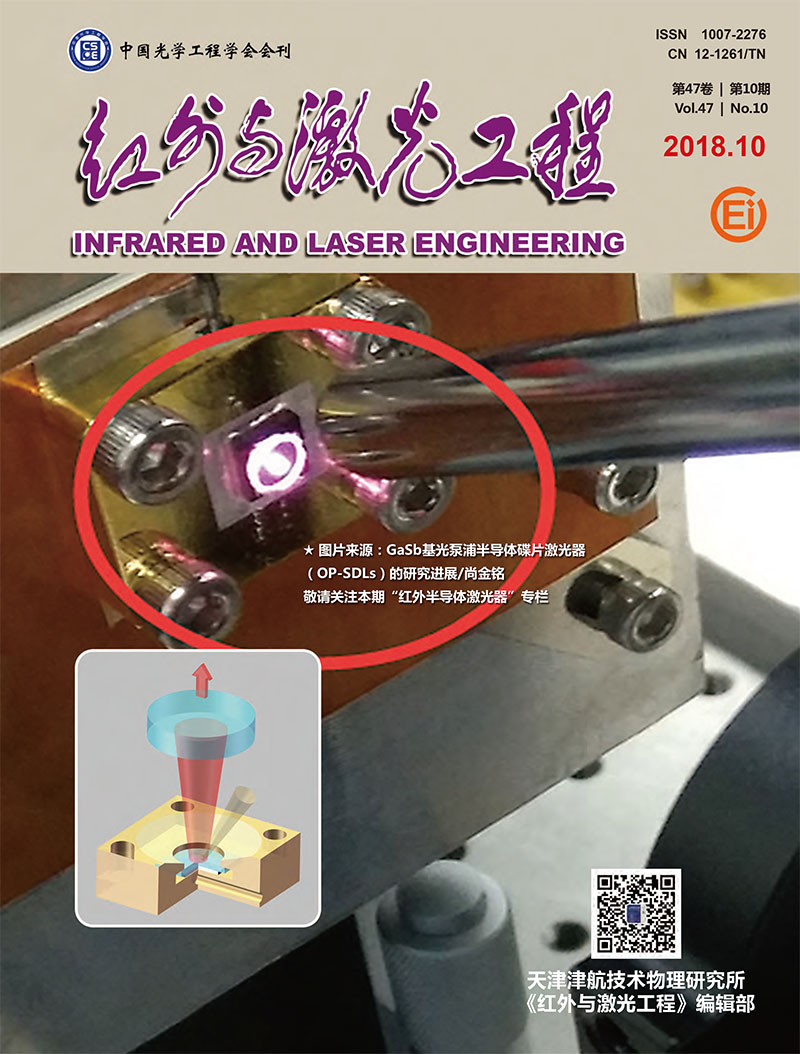|
[1]
|
Leon Shterengas, Rui Liang, Gela Kipshidze, et al. Type-I quantum well cascade diode lasers emitting near 3m[J]. Appl Phys Lett, 2013, 103(12):121108. |
|
[2]
|
Grau M, Lin C, Dier O, et al. Room-temperature operation of 3.26m GaSb-based type-I lasers with quinternary AlGaInAsSb barriers[J]. Appl Phys Lett, 2005, 87(24):241104. |
|
[3]
|
Gaimard Q, Nguyen-Ba T, Larrue A, et al. Distributed-feedback GaSb-based laser diodes in the 2.3 to 3.3m wavelength range[J]. Semiconductor Lasers and Laser Dynamics Vi, 2014, 9134:2052115. |
|
[4]
|
Yang R Q, Pei S S J. Novel type-Ⅱ quantum cascade lasers[J]. J Appl Phys, 1996, 79(11):8197-8203. |
|
[5]
|
Meyer J R, Ho_man C A, Bartoli F J, et al. Type-Ⅱ quantum-well lasers for the mid-wavelength infrared[J]. Appl Phys Lett, 1995, 67(6):757-759. |
|
[6]
|
Thompson G H B, Kirkby P. (GaAl)As lasers with a heterostructure for optical confinement and additional heterojunctions for extreme carrier confinement[J]. IEEE J Quantum Electron, 1973, 9(2):311-318. |
|
[7]
|
Sirtori C, Faist J, Capasso F, et al. Quantum cascade laser with plasmon-enhanced waveguide operating at 8.4m wavelength[J]. Appl Phys Lett, 1995, 66(24):3242-3244. |
|
[8]
|
Yang R Q. Infrared laser based on intersubband transitions in quantum wells[J]. Superlatticeand Microdevices, 1995, 17(1):1017. |
|
[9]
|
Lin Chih-Hsiang, Yang Q, Zhang D, et al. Type Ⅱ interband quantum cascade laser at 3.8m[J]. Electronics Letters, 2015, 33(7):598-599. |
|
[10]
|
Yang R Q, Bruno J D, Bradshaw J L, et al. High-power interband cascade lasers with quantum efficiency 450%[J]. Electronics Letters, 1999, 35(15):1254-1255. |
|
[11]
|
Bradshaw J L, Yang R Q, Bruno J D, et al. High-efficiency interband cascade lasers with peak power exceeding 4 W/facet[J]. Appl Phys Lett, 1999, 75(16):2362-2364. |
|
[12]
|
Bradshaw J L, Bruno J D, Pham J T, et al. Continuous wave operation of type-Ⅱ interband cascade lasers[J].IEEE Proc Optoelectron, 2000, 147:177-180. |
|
[13]
|
Bruno J D, Bradshaw J L, Yang R Q, et al. Low-threshold interband cascade lasers with power efficiency exceeding 9%[J]. Appl Phys Lett, 2000, 76(22):3167-3169. |
|
[14]
|
Bradshaw J L, Pham J T, Yang R Q, et al. Enhanced CW performance of the interband cascade laser using improved device fabrication[J]. IEEE J Select Top Quantum Electron, 2001, 37(2):102-105. |
|
[15]
|
Yang R Q, Bradshaw J L, Bruno J D, et al. Power, efficiency, and thermal characteristics of type-Ⅱ interband cascade lasers[J]. IEEE J Select Top Quantum Elctron, 2001, 37(2):282-289. |
|
[16]
|
Yang R Q, Bradshaw J L, Bruno J D, et al. Room temperature type-Ⅱ interband cascade laser[J].Appl Phys Lett, 2002, 81(3):397-399. |
|
[17]
|
Yang R Q, Hill C J, Christensen L E, et al. Mid-IR type-Ⅱ interband cascade lasers and their applications[C]//Proc of SPIE, 2005, 5624:413-422. |
|
[18]
|
Yang R Q, Hill C J, Yang B H. High-temperature and low-threshold midinfrared interband cascade lasers[J]. Appl Phys Lett, 2005, 87(15):151109. |
|
[19]
|
Hill C J, Yang R Q. MBE growth optimization of Sb-based interband cascade lasers[J]. J Cryst Growth, 2005, 278(1):167-172. |
|
[20]
|
Mansour K, Qiu Y, Hill C J, et al. Mid-infrared interband cascade lasers at thermoelectric cooler temperatures[J]. Electron Lett, 2006, 42(18):1034-1035. |
|
[21]
|
Yang R Q, Hill C J, Mansour K, et al. Distributed feedback mid-IR interband cascade lasers at thermoelectric cooler temperatures[J]. IEEE J Select Top Quantum Elctron, 2007, 13(5):1074-1078. |
|
[22]
|
Kim M, Canedy C L, Bewley W W, et al. Interband cascade laser emitting at 3.75 in continuous wave above room temperature[J]. Appl Phys Lett, 2008, 92(19):191110. |
|
[23]
|
Vurgaftman I, Bewley W W, Canedy C L, et al. Rebalancing of internally generated carriers for mid-infrared interband cascade lasers with very low power consumption[J]. Nature Communications, 2011, 2(1):1585-1595. |
|
[24]
|
Robert Weih, Martin Kamp, Sven Hfling, et al. Interband cascade lasers with room temperature threshold current densities below 100 A/cm2[J]. Appl Phys Lett, 2013, 102(23):231123. |
|
[25]
|
Bewley W W, Kim C S, Canedy C L, et al. High-power CW performance of 7-stage interband cascade lasers[J]. Opt Express, 2014, 22(7):7702-7710. |









 DownLoad:
DownLoad: